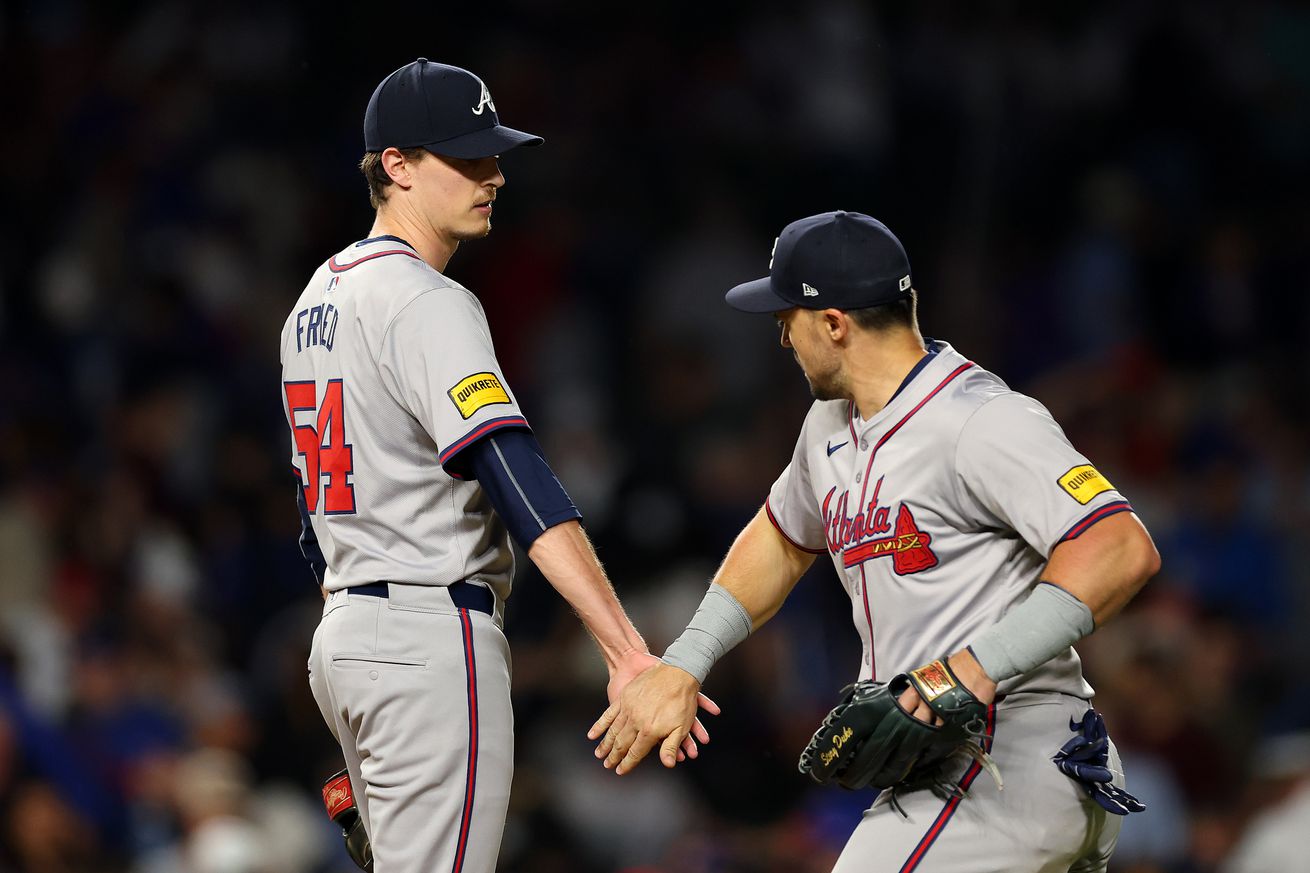
The Braves didn’t exactly break out offensively, but pitching carried the day once again in a series win
The Atlanta Braves did this week what they also did last week: take a series from the Chicago Cubs. In Atlanta, they won the first two games and got blown out when they couldn’t finish off a sweep; at Wrigley Field, they dropped the first game and took the next two.
Pitching remains a strength
Overall, the Braves did what they’ve done to rack up wins even as the bats have struggled to get the results they were hoping for: keep the opposing team off the board.
Charlie Morton got blown out in the finale against the Cubs in Atlanta, but bounced back with a nice outing where he struck out eight in five innings and kept the ball in the yard. Sure, he walked four, but he also kept things manageable despite spotty defense behind him. The Braves ended up losing the game, but mostly due to a lack of scoring and some strange reliever choices.
Max Fried then threw a complete game in an eventual blowout, going 15-up, 15-down to start and finishing with a stellar 9/0 K/BB ratio. The Braves followed that with a well-managed and even-better-pitched game where AJ Smith-Shawver and five relievers combined to shut the Cubs out while striking out nine and walking just three. Smith-Shawver was fortunate to get some big outs on fly balls in sequences where the defense and/or his command caused the water to get a little hotter, but was ultimately effective across 18 batters faced. The bullpen, meanwhile, was allowed to do what they weren’t really deployed for in the series opener, and locked it down from there.
With today’s effort, the Braves have now clambered into the top ten among MLB teams by pitching fWAR. Their pitching triple-slash line is 80/94/93, marks which are fourth, sixth, and fifth, respectively. They’ve been a top-five pitching staff over the last two weeks (not counting today) as well as over the last month.
Max Fried is Max Good
Okay, maybe not max good, but really good, again! After his complete game on Wednesday, Fried now has a 82/90/85 line — his career line is 71/79/79. That’s mighty impressive considering that he started the season with a very ugly 188/130/110 in four starts. Since then? He’s had two complete games (one Maddux), two no-hit outings, and a couple of so-so outings, combining for 42/75/76.
With Fried hitting 1.0 fWAR thanks to his last start, the Braves are now one of seven teams in baseball with at least three starters at or above that threshold. (Unsurprisingly, the Phillies are the only team with four.)
A rare lapse with runners in scoring position (yes, you read that right)
You might be hard-pressed to believe anything that links the Braves and “situational hitting” positively, especially after Tuesday night’s horrific loss where the Braves ended up losing on an extra-innings chopper despite outhomering the Cubs and clogging the bases seemingly every inning, but it’s true!
The Braves came into the series finale with a 123 wRC+ with runners in scoring position, good for seventh-best in MLB. Why is that impressive? Well, their wRC+ is only 109 on the season (also seventh-best). By Baseball-Reference’s OPS+ measure, they’re hitting 15 percent better with RISP than their overall line, and 14 percent better than the league in that situation. By comparison, last year, they actually hit 17 percent better than league with RISP… but four percent worse than their overall line. While they were better in this regard in 2021 (19 percent and 18 percent better, respectively), they were comparatively unimpressive with RISP in the other seasons.
There’s two ways to think about this — I found this surprising (and keep in mind these stats are after Tuesday’s debacle), but as Kris pointed out to me: this kind of has to be the case this season, or else they’d be scoring basically zero runs every game.
